History
Development of this aircraft started in 1916, when Frank S. Barnwell began to design an successor of the R.A.F. R.E.8 and of the F.K.8.
The first prototype Bristol Type 9 R.2A was equipped with a Beardmore engine, rated at 190 hp, whereas the second prototype was equipped with a Hispano Suiza rated at 150 hp.
At about the same time the new Rolls Royce Falcon engine, rated 190 hp was released. Both R.2- aircraft were not put into production, but Barnwell developed an new aircraft, the Type 12 F.2A
This was an two seat fighter which made it maiden flight in September 1916.
As armament it was equipped with a synchronized .303 inch Vickers machine gun and a flexible mounted Lewis .303 inch for the gunner.
There were just 52 F.2As built when production of the next version started, the Bristol Type 14 F.2B. This type made its maiden flight in October 1916. The first examples had the Falcon I or Falcon II engine, later the Falcon III rated 275 hp was mounted.
The F.2b was faster than the F.2A, with a maximum speed of 198 km/h; also a second Lewis machine gun was added.
The Rolls Royce engines were rather hard to find, so attempts were made to find a alternate engine.
Several aircraft were equipped with the Sunbeam Scarab of 200 hp under the designation Type 15. This engine suffered many problems, such as heavy vibration. For this reason this model had a limited production.
The Bristol Type 16 was equipped with a Hispano-Suiza rated 200 hp. Alas this engine was hardly available as it was already used for the S.E.5A and the Sopwith Dolphin.
The Bristol Type 17 was equipped with a Hispano-Suiza rated 300 hp, but was available in sufficient quantities after the war.
Other examined engines were the 200 hp RAF 4d, the Wolseley Viper rated 180 hp and the Armstrong Siddeley Puma rated 230 hp.
A proposed version with a radial engine was the Bristol Type 22 F.2C.
American versions.
The United States Army Engineering Division planned to produce a version of the Bristol Fighter equipped with the Liberty L-12 engine.
This engine proofed to be to heavy for the Bristol, so only 27 were built. Attempts to obtain the better suitable Liberty 8 or Hispano-Suiza of 300 hp encountered political and practical problems.
Post war developments.
After the war a two seats version, the Bristol Type 14 F.2B Mk II, was developed. It had tropical equipment and made its first flight in December 1919. Almost 500 examples were built.
The Bristol Type 96 Fighter Mk III and Type 96A Fighter Mk VI had structural improvements and fifty were built in 1926 and 1927. Surplus F.2Bs were modified for civilian use, the Bristol Tourer was an F.2B fitted with an Armstrong Siddeley Puma engine and canopies.
| Dimensions: | |||
| Length: | 7,87 m | Wingspan: | 12,09 m |
| Height: | 2,97 m | Wing area: | 37,72 m2 |
| Weights: | |||
| Empty weight: | 791 kg | Max. start weight: | 1474 kg |
| Performances: | |||
| Max. speed: | 201 km/hr | Rate of climb: | 6,5 minutes to 1980 m |
| Range: | 3 hours | Service ceiling: | 6100 m |
| Miscellaneous: | |||
| Engine type: | One Rolls Royce Falcon III rated 275 pk. | ||
| Crew: | Two men. | ||
| Armament: | One fixed forward firing Vickers machine-gun plus one or two movable Lewis machine-guns; 12 * 9 kg bombs. |
||
An aircraft of this type made an emergency landing on September 29, 1917 between Sluis and Zuidzande in Zeeuws-Vlaanderen. It was interned and moved to Soesterberg, where it arrived on October 8, 1917.
After overhaul Lt. Versteegh flew with it on January 23, 1918.
After the war Lt. Versteegh and Hofstee flew with it to England on September 30, 1919 and returned to the Netherlands on October 13, 1919.
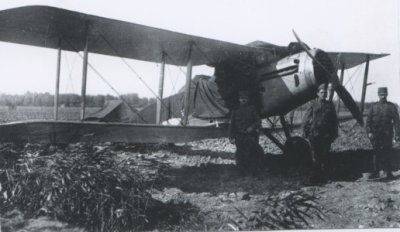
[Enclosed photo from BeeldBank NIMH. Click on photo for ordering information]
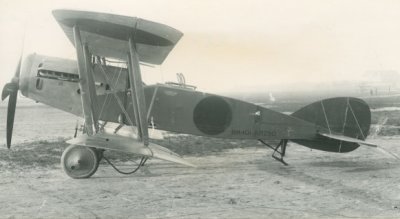
[Enclosed photo from BeeldBank NIMH. Click on photo for ordering information]

[Enclosed photo from BeeldBank NIMH. Click on photo for ordering information]
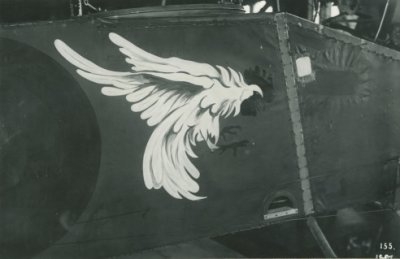
[Enclosed photo from BeeldBank NIMH. Click on photo for ordering information]
| Serial | Construction nr. | RFC Serial | Date in service | Date out of service | Notes |
|---|---|---|---|---|---|
| BR-401 | B1124 | 29-09-1917 | 1920 |
1/72nd Scale
Kits
- Airfix
- Kit 01005: an older model, re-released every now and than.
- Classic Plane
- Kit CPM Bristol: Siddely-Puma Bristol Fighter: Airfix F2B kit with new fuselage, engine and decals.
- Kit CPL Brisol: Hispana-Suiza Bristol Fighter (BAF): Airfix F2B kit with new fuselage, engine and decals.
- Pegasus
- Kit 4012: Two seat fighter.
- Roden
- Kit 043: injection moulded kit
Modelling add-on
- Roden
- Set S72-205: foto-ets detaillingsset
Decals
- Dutch Decal
- Set 72035: a decalset for e.g BR401.
1/48th Scale
Kits
- Aeroclub
- Kit F2B: A model of a Bristol F2B Fighter.
- Blue Max
- Kit 203: A model of a Bristol F2B Fighter.
- Eduard
- Kit 8488: A model of the Bristol F2B Fighter with decals for an example of 62 squadron RFC Frane 1918.
- Kit 8126: A model of the Bristol F2B Fighter.
- Kit 1127: A model of the Bristol F2B Fighter "the Crocodile" .
- Roden
- Kit 425: A model of a Bristol F2B Fighter.
- Kit 428: A model of a Bristol F2B Fighter Mk. IV
- Kit 429: A model of a Bristol F2B Fighter (with Sunbeam Arab Engine).
Modelling add-on
- Part Etchings
- Set S48133: Photo-etch detail set (for Roden)
Decals
- --
- Set --: --
The fuselage was overall PC10. This colour varied from dark green to brown [between Humbrol H179 to Humbrol H108]; the wings were clear doped linen.
The markings of the RNlAF at that time were orange balls. Visible wooden and metal parts were covered with OP7 varnish, which had a colour similar to PC10.
| Scheme | Colour name | FS number | Humbrol | XtraColor | Vallejo Model Color | Vallejo Model Air | |
|---|---|---|---|---|---|---|---|
| Standard #1 | Fuselage | PC10 | ~4086 | X144 | 70.830? | ||
| Wings | Clear doped linen | 121 | X105 | 70.819 | |||
Check www.paint4models.com for an extensive conversion table with lots of colour and paint systems.
Literature.
| Nederlandse Militaire Luchtvaart in Beeld. deel 1. | Hugo Hooftman | Pag. 30 | 1977 | Uitgever Europese Bibliotheek, Zaltbommel |
| Vintage Warbird no 1: The Royal Flying Corps in worldwar One | Raymond Laurence Rimell | Pag. 18 - 19 | 1987 | Uitgever Arms and Armour Press, Poole, Dorset |
| Aircraft Archive: Aircraft of World War One; Volume 2. | Pag. 6 - 11 | 1989 | Uitgever Argus Books, Hempsted | |
| Camouflage en Kentekens | J.Greuter e.a. | 1997 | Bonneville – Bergen (NH) | |
| Air Enthusiast no.80, The Historical Aviation Journal: Unexpected Windfalls | bart van der Klaauw | Pag. 54 - 59 | 1999 | Uitgever Key Publishing, Stamford |
Websites.
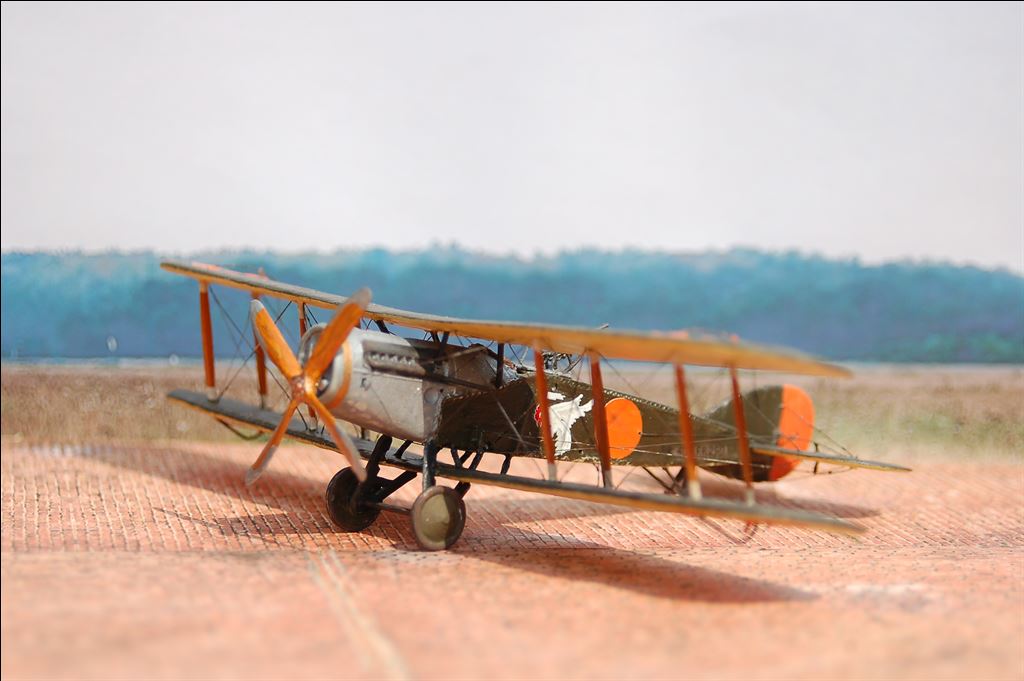

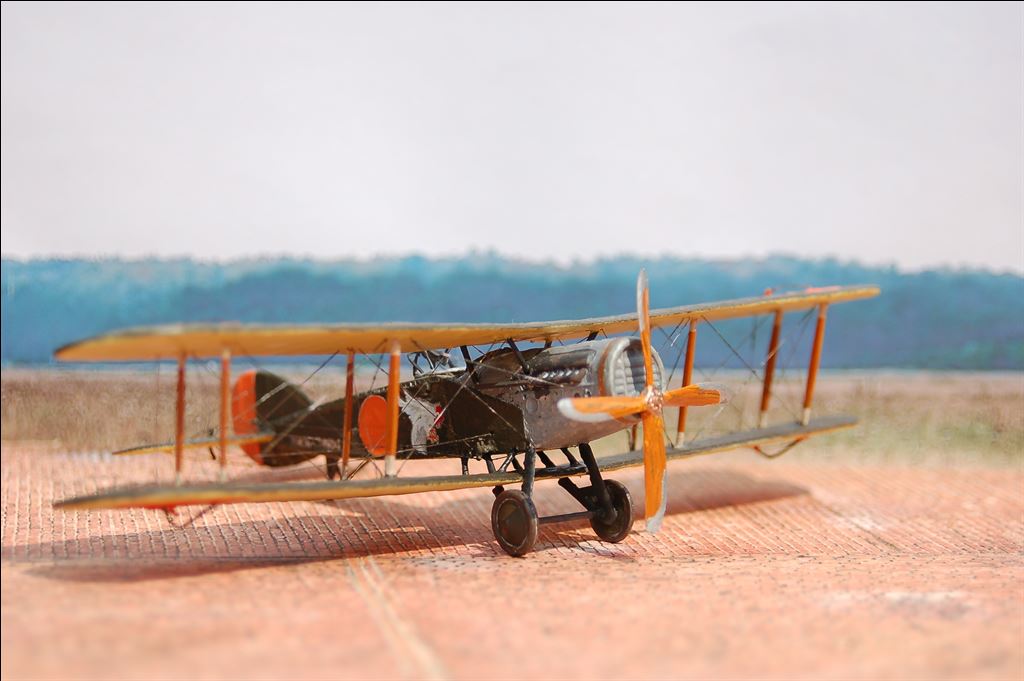

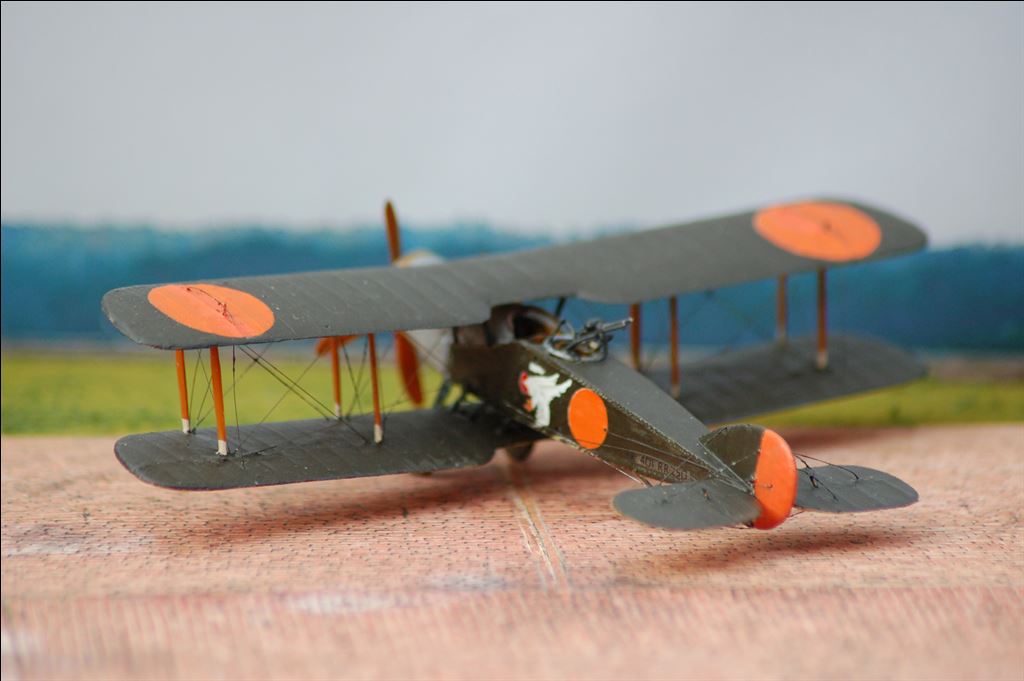
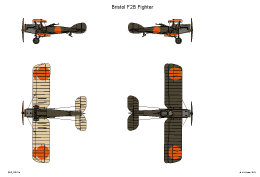
 Nederlands (nl-NL)
Nederlands (nl-NL)  English (United Kingdom)
English (United Kingdom)